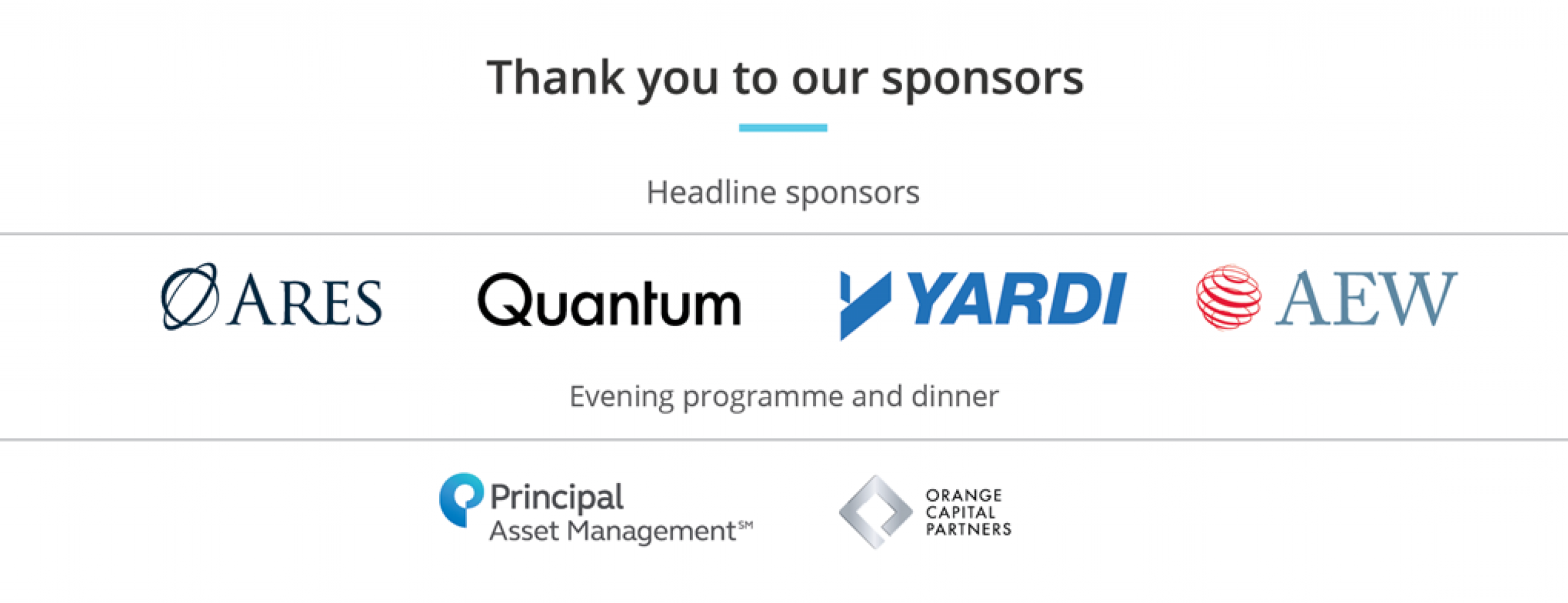INREV Young Professionals Conference 2024: Highlights
The INREV Young Professionals Conference 2024 took place in the vibrant city of Dublin on 4 September. The flagship event brought together 210 young professionals (under 32) in non-listed real estate for an exceptional day of learning and connection.
From the outset, the atmosphere was electric, with attendees eager to reconnect with peers, expand their networks and gain insights surrounding the theme of ‘Embracing change: innovation for today’s market dynamics’. The day’s agenda featured a series of inspiring speakers and thought-provoking discussions, tackling timely topics such as net zero strategies, the transformative role of AI, and advancing diversity and inclusion within the industry.
Inclusive growth: macroeconomics for a fairer future (Gary Stevenson)
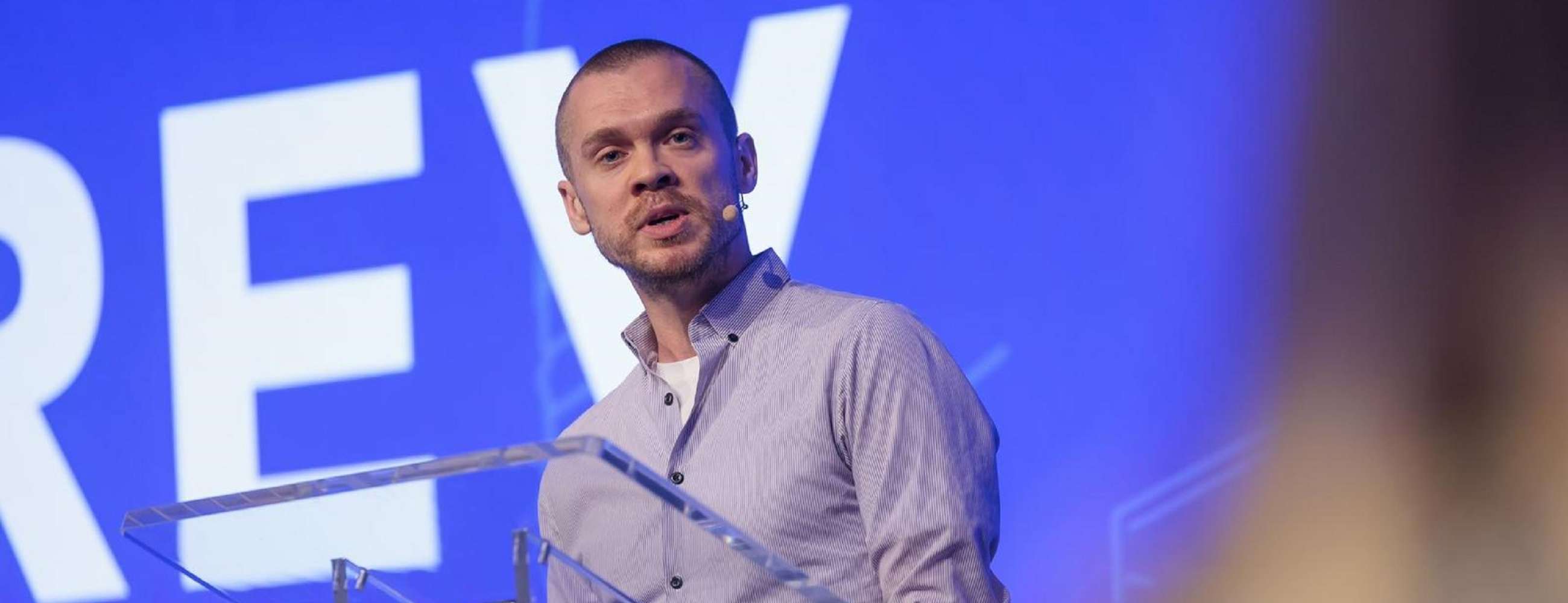
Kicking off the first session of the INREV Young Professionals Conference 2024, Gary Stevenson, economist, inequality activist, and former financial trader, gave a keynote presentation on "Inclusive Growth: Macroeconomics for a Fairer Future." Gary shared his compelling personal journey, from his working-class background in Ilford to winning a scholarship to study economics and mathematics at the London School of Economics. At 21, he began his career as a financial trader at Citibank in 2008, during the global financial crisis.
Gary became a millionaire by predicting a significant rise in economic inequality, betting that growing poverty would keep interest rates low. His prediction proved accurate, making him Citibank’s most profitable trader globally in 2011. Despite his success, Gary left financial trading in 2014 to pursue an MPhil in Economics at the University of Oxford, driven by his passion to address economic inequality.
Drawing from his experiences, Gary explained how early predictions of a quick economic recovery following the Global Financial Crisis were incorrect—and have remained so for 16 years. He discussed how the rich have grown wealthier, while the middle class has faced bankruptcy and failed to recover. Gary questioned where government-injected recovery funds have gone and pointed out how corporate profits have surged, enriching the wealthiest.
His proposed solution involves shifting the tax burden from workers to the wealthy, suggesting a 1% tax on individuals earning over £10 million annually as a technical fix to slow the rise of inequality. However, he cautioned that without significant reform, the middle class could disappear entirely.
Throughout his presentation, Gary urged the importance of understanding inequality’s root causes and educating others to drive change.
Adapting to higher rates: challenges and opportunities in European real estate (Megan Walters)

In the second session, Megan Walters (PIMCO Prime Real Estate) explored the evolving landscape of European real estate amid rising interest rates.
Megan emphasised the distinction between risk premium and real risk-free rates, a critical factor when assessing investment opportunities. While interest rates have risen globally, European real estate remains notably stable compared to regions like the U.S., which is grappling with under-demand in office spaces, and Asia-Pacific, where oversupply is a concern. She attributed part of this stability to Europe's stronger furlough schemes during the COVID-19 pandemic, which kept workers connected to their companies, unlike in the U.S., where many were displaced. This, she noted, reflects a broader trend: Europeans tend to be more attached to their cities, while Americans are highly mobile, which can create volatility in certain markets.
Delving into the challenges of excess office stock, particularly in the U.S., Megan suggested that cities that allow flexible reworking of buildings—possibly converting older, less efficient stock into sustainable residential spaces—will be the ones to thrive. She agreed with Gary Stevenson’s earlier sentiments that cap rates had been misjudged over the past 16 years and pointed out that while most cap rates are now where they should be, cities like Frankfurt face higher rates due to purchasing difficulties.
Megan outlined how investors can use financial cycles to frame their investment choices. With selective investors already returning to the market, she predicted that 2025 could be a prime year for commercial real estate investment. She also observed that in every real estate downturn, equity buyers—such as high-net-worth family offices and pension funds—are typically the ones who step in.
In closing, Megan emphasized the importance of social infrastructure, particularly in cities like Singapore, where the government fosters social activities to keep streets safe and vibrant. She encouraged participants to think about career opportunities in adjacent roles within the real estate industry, as networking remains key to career success. Though time was limited, Megan’s detailed presentation left attendees with a wealth of insights into the evolving real estate market.
Audience poll:
What do you view as your biggest obstacle to a successful career in real estate?
- Work-life balance - 21%
- Financial market cycles - 51%
- Fire & physical risks (e.g. building collapse) - 0%
- AI technology - 6%
- ESG risks - 7%
- Opaque market information - 15%
Investor insights: taking the pulse of the market (Charlotte, Brendan, Vicky, Sander)
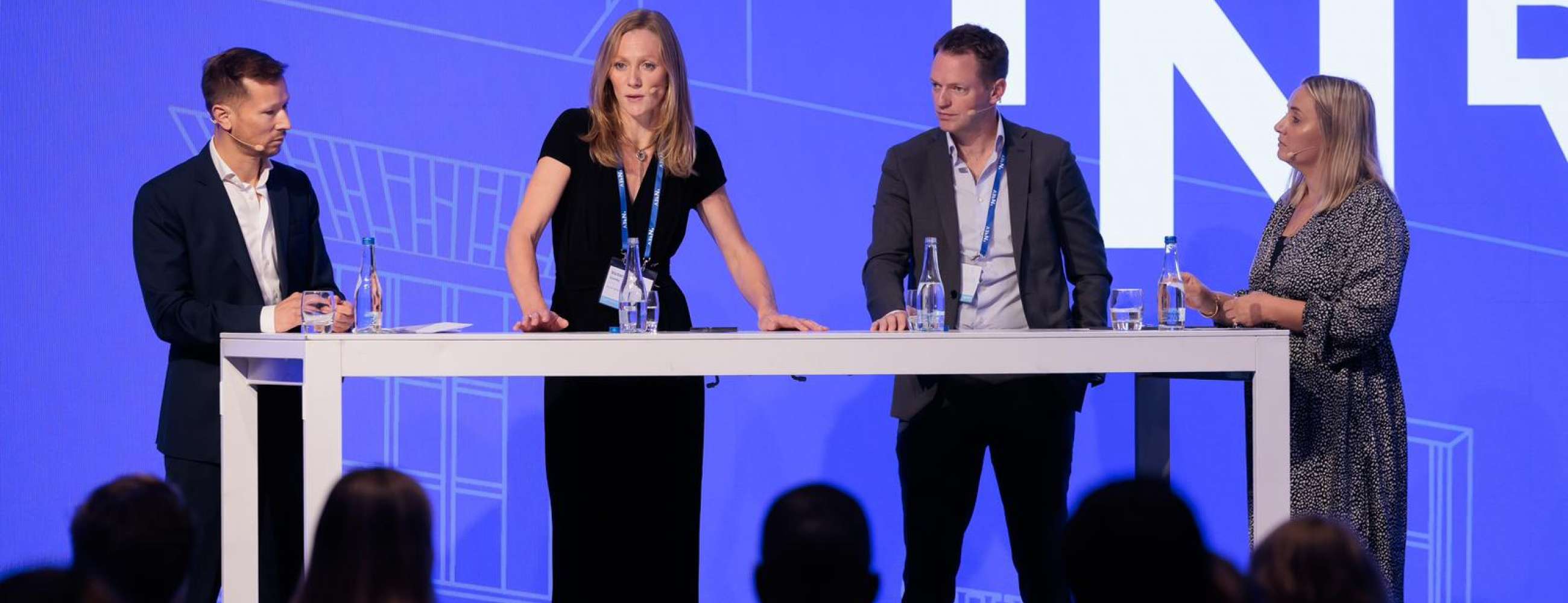
In this panel discussion on "Investor insights: taking the pulse of the market" our guest experts provided a comprehensive look at the current investment landscape. Moderated by Charlotte Robinson, the session featured Brendan Byron (Ireland Strategic Investment Fund) Vicky Stanley (Australian Super) and Sander van Riel (CBRE IM Indirect Private Real Estate).
The panellists explored key investment strategies, focusing on maximising financial outcomes in a world shaped by digitisation, demographics, and AI. They emphasised that investors are not only targeting buildings but also platforms and businesses with the potential for scale and quality. Sander noted that while office markets are seeing the most rent growth, residential sectors face challenges due to regulation, leading to underwhelming prices for new developments. Vicky shared that as a long-term investor, Australian Super has recently allocated capital to fixed income, with logistical and living sectors—particularly in the UK—being the most attractive. Data centres, often classified as infrastructure, are also a major focus.
The discussion touched on geopolitical tensions and the associated risks. Sander highlighted the need for diversification to manage development market risks, while Brendan emphasised that elections and policy changes remain significant concerns. ESG was another central theme, with Brendan stressing its importance in his impact fund, despite the costs. Sander agreed, noting that domestic markets tend to attract more attention when impact investing due to a home bias, while Vicky affirmed that sustainability is at the heart of Australian Super’s long-term investment strategy.
The panellists also discussed secondary transactions. While all acknowledged secondary deals are an option, opportunities have been underwhelming, and thus generate less interest.
Offering advice to young professionals, the panel stressed resilience and the importance of networking with peers to gain better insights and build strong relationships. They agreed that hiring people who are smarter, energetic, and eager to learn is crucial to team success. When asked what keeps them up at night, all agreed that the housing crisis is a pressing issue, calling for greater collaboration between the public and private sectors to address it.
Despite the challenges, the panel remained optimistic, particularly about the growing capital dedicated to impact investing. They emphasised that change is possible if pursued with persistence, with the tide slowly starting to turn toward a more positive future.
Audience poll:
What do you expect your Real Estate allocation to do in the next 12-24 months?
- Increase - 52%
- Decrease - 8%
- Maintain - 28%
- Don't know - 4%
- Don't invest into real estate - 8%
What is your biggest concern at the moment?
- Interest Rates - 31%
- Geo-political tension - 40%
- ESG and climate concerns - 11%
- Inflation - 7%
- Other - 11%
New build or retrofit?: strategies for net zero (Alex, Andy, Rudy, Zara)
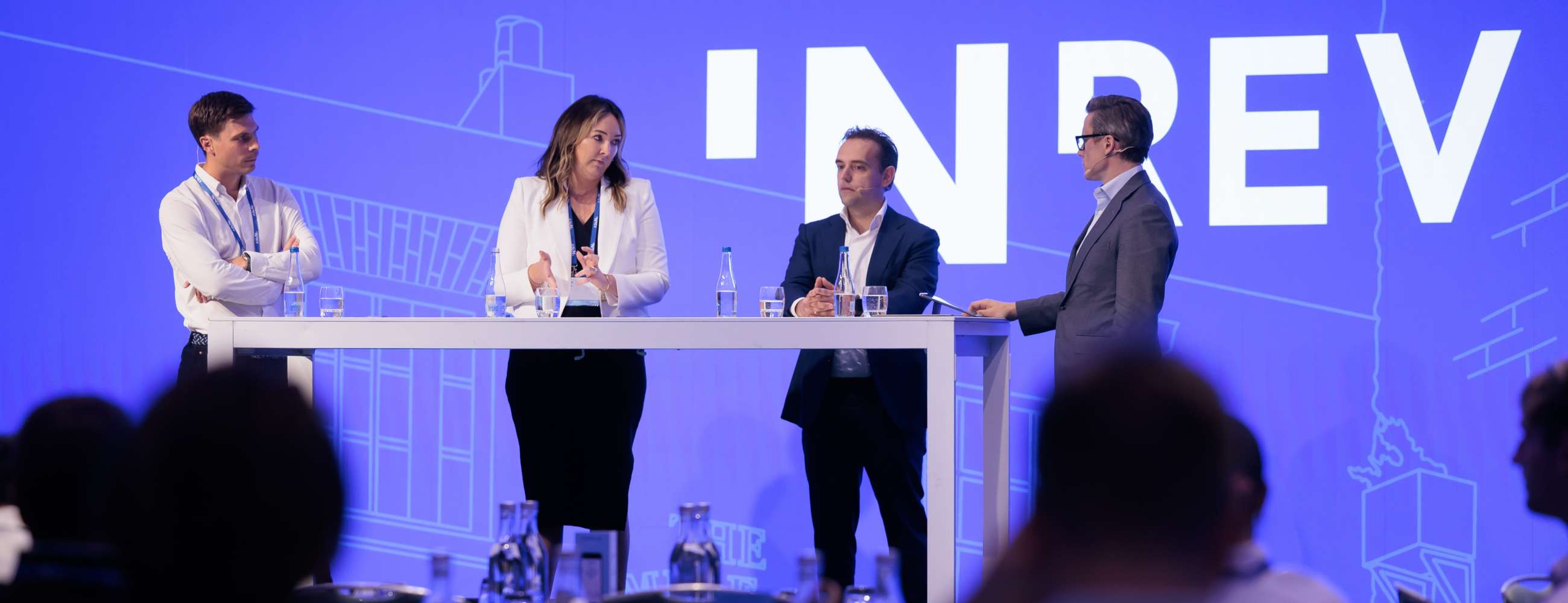
In this panel discussion titled "New build or retrofit?: strategies for net zero", our guest experts tackled the challenges and opportunities in reducing carbon emissions in the real estate industry. Moderated by Alex Knapp, CIO at Hines, the session featured Andy Haigh (Grosvenor), Rudy Verstappen (Altera Vastgoed) and Zara Walsh (IPUT).
The panel began by addressing the significant environmental impact of construction, with 80% of CO2 emissions originating from the sector. They explained that the net zero landscape is rapidly evolving, and depending on the market, "the writing is on the wall" for the necessity of net zero strategies, particularly as policies continue to change. Altera, for example, has taken a low-risk, core strategy approach to ensure flexibility in response to new regulations. The panel suggested testing small-scale changes before wider implementation to better understand the impact and taking a "leap of faith" to get ahead of future regulations, such as the recent UK Westminster regulation that will increase carbon pricing from £90 a tonne to £900 a tonne.
The panellists also discussed the issue of green premiums for newer buildings versus a "brown discount" for non-compliant properties. Zara stated that real estate markets are moving beyond the idea of a green premium, noting that green features are now essential to a building’s performance and value. Investors and tenants increasingly prioritise sustainability, with value ratings being more reactive to performance metrics rather than aesthetics alone.
The panel also tackled the complexities of retrofitting existing buildings. In the residential sector, 70% of tenants must agree to any retrofitting efforts, making it essential to find strategic partners who can help persuade stakeholders. Retrofitting offices, retail, and residential spaces presents various challenges, but as the panel emphasised, the process is about improving what exists, not just starting from scratch. There is increasing pressure to retrofit, but not every building is suitable for such projects.
Finally, the panel explored measuring embodied carbon and the importance of understanding how to reduce it. Measuring embodied carbon is relatively easy, but changing mindsets around retrofitting remains difficult. The conversation ended with a discussion on buying carbon offsets and the importance of incorporating both retrofits and new builds into a comprehensive net zero strategy. The panellists agreed that in a world rapidly shifting toward sustainability, having a flexible, yet aggressive approach to achieving net zero is crucial for the future of real estate.
Audience poll:
Are you aware of what your company’s net zero strategy is?
- Yes, I know all the ins and outs - 21%
- Yes, however I only know the overall strategy - 61%
- No, I am not really sure what it includes - 15%
- No, what does a net zero strategy actually mean? - 3%
Fostering inclusion: addressing bias and supporting diversity in the workplace (Laura and Maddy Durrant)
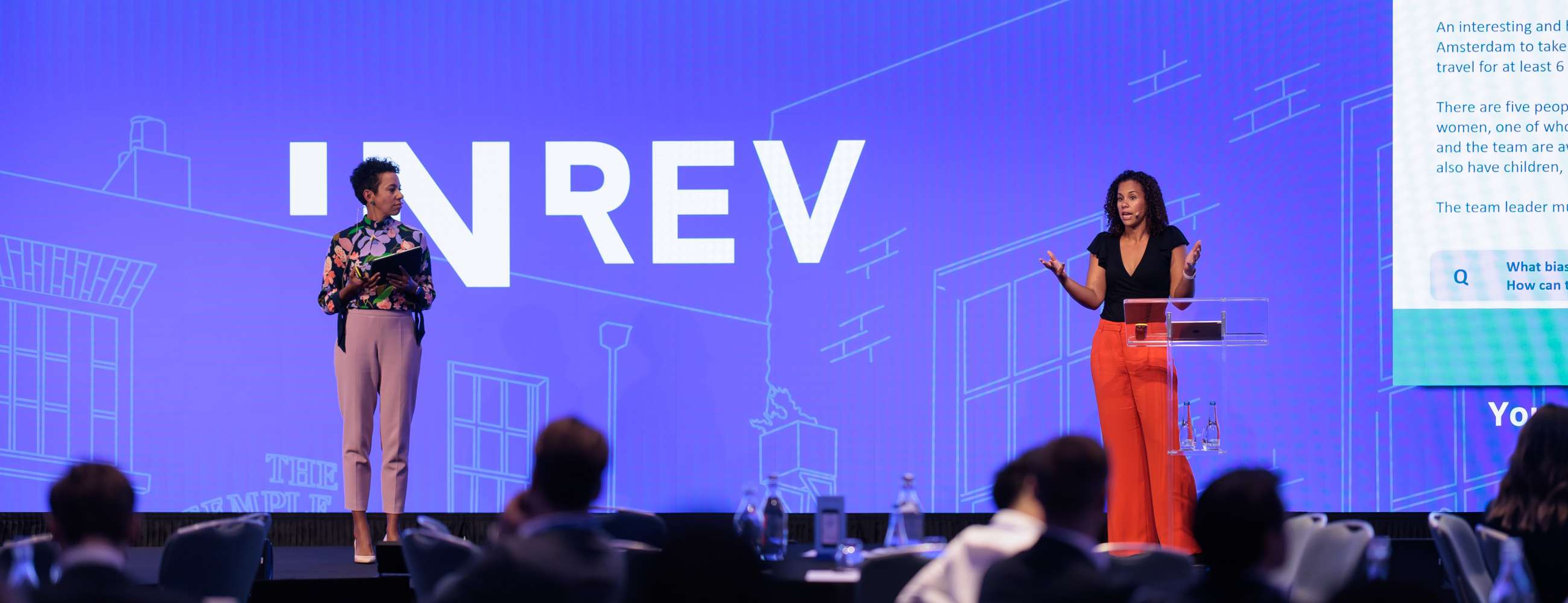
In the session titled "Fostering Inclusion: Addressing Bias and Supporting Diversity in the Workplace," Laura and Maddy Durrant of Equitura delivered a compelling presentation and interactive workshop aimed at promoting diversity, equity, and inclusion (DEI) within organisations.
The presentation began by making a strong case for keeping diversity on the business agenda. Laura and Maddy emphasised that diversity drives positive financial outcomes, enhances creativity, improves staff retention, and boosts productivity. They also highlighted the growing demographic shifts, with women now making up nearly half the global workforce, and former "minority groups" increasingly moving towards "majority status," with Generation Z and Millennials being more diverse than previous generations. As a result, more employees are also seeking out workplaces that value diversity.
A key focus of the session was on bias as a barrier to equity. The sisters discussed how unconscious biases—deep-seated assumptions that operate without our awareness—shape our perspectives and decision-making processes. Through an interactive exercise, participants analysed two images of an Asian woman and a Black man to explore their biases and assumptions. They were also prompted to reflect on the diversity of their personal and professional networks and consider how these influence their worldviews.
The workshop delved into various types of biases, and the Durrant sisters explained how systemic discrimination can perpetuate inequality. They also introduced the Pygmalion effect, demonstrating how our thoughts and expectations can create self-fulfilling prophecies that reinforce stereotypes and exclusion.
In discussing bias in the workplace, the session covered how it can affect everything and result in inequitable distribution of rewards, skewed performance assessments, and poor decision-making—all of which undermine workplace relationships and trust.
To address these challenges, the Durrant sisters encouraged participants to consciously engage their "System 2" thinking—slower, more deliberate, and logical—instead of relying on instinctive "System 1" responses to question emotional responses, seek opposing viewpoints, and broaden one's social network. Leadership strategies included diversifying leadership teams, institutionalising fair practices, and training employees to recognise and address bias.
Through self-reflection and group discussions, participants were empowered to challenge their own biases and support more inclusive environments within their organisations.
Audience polls:
How diverse is your workplace? (e.g. gender, people of colour, age)
- Very diverse - 11%
- Somewhat diverse - 32%
- Not very diverse - 35%
- Diverse at junior levels but significantly less so at more senior levels - 22%
On LinkedIn, how diverse is your network?
- Very diverse - 19%
- Somewhat diverse - 56%
- Not very diverse - 26%
Socially, how diverse is your network? (e.g. people of colour, age, religion, socio-economically)
- Similar backgrounds and profiles - 43%
- Somewhat varied backgrounds and profiles - 43%
- Very varied backgrounds and profiles - 14%
Do you feel yourself to be a minority in your workplace in any way? (caring repsonsibilities, disability, sexual orientation, age, race, ethnicity)
- Yes - 35%
- No - 60%
- Unsure - 5%
What are my biases?
- Men are better leaders - 6%
- Female bosses can be hard work - 12%
- New parents won't be as committed - 21%
- Professional attire must be conservative and traditional - 22%
- A strong regional accent makes people less impressive to clients - 24%
- Male facial hair is unprofessional - 5%
- People with different educational attainment levels won't get along - 10%
AI at work: reimagining everyday tasks (Ivan Brkic)

In the session "AI at work: reimagining everyday tasks", Ivan Brkic, Global Client Lead at Google, explored the transformative potential of artificial intelligence (AI) in the workplace. He began by polling the audience, asking how many currently use AI in their work. While most participants had some experience with AI, the numbers diminished as the questions grew more specific.
Ivan outlined the recent technological shifts, emphasising that AI represents the third major platform shift in business operations. He distinguished between two types of AI: analytical and predictive AI, which optimises processes, and generative AI, which unlocks creativity and productivity. Both types, he explained, impact various aspects of business and society. For instance, Alphabet’s AlphaFold is already revolutionising biology by accurately predicting 3D models of protein structures, and AI in mammography is advancing early cancer detection.
AI’s capabilities extend far beyond traditional business applications, enhancing areas such as art creation, 2D-to-3D experiences, and workflow optimization. Currently, 87% of companies express interest in AI, but its practical use remains limited. The most common business applications include document writing (34%), data analysis (27%), information retrieval (25%), and marketing optimization (21%).
Ivan noted that AI is becoming an essential business tool, particularly in improving customer service, virtual try-ons, and energy-efficient data centres. However, he stressed that AI is underutilized in many sectors, and generative AI, in particular, has immense untapped potential.
A critical takeaway from the session was the assertion that “You’re not competing with AI; you’re competing with another business using AI”, a quote by Sundra Pichai. Ivan encouraged businesses to think critically about daily processes that could be automated and to define AI use cases, test, learn, and scale AI initiatives. Beyond business, Ivan underscored AI’s role in addressing global challenges like climate change, flood forecasting, and optimising solar power generation.
Ivan concluded with Google’s seven AI principles, emphasising the importance of responsible AI use: ensuring social benefit, avoiding bias, prioritising safety, accountability, privacy, scientific excellence, and adherence to ethical standards. He also highlighted how AI can benefit the real estate sector, often as an embedded feature in tools businesses already use. The session left attendees with practical insights on how to embrace AI to enhance their daily work and future-proof their operations.
Audience poll:
Which of the following three is not considered a big platform shift in recent history?
- Internet - 26%
- Social Media - 32%
- Mobile - 42%
What is the adoption of genAI initiatives deployed within business operations in 2024?
- 17% - 69%
- 49% - 23%
- 83% - 8%
Finding truth in a post-truth world (Eliot Higgins)
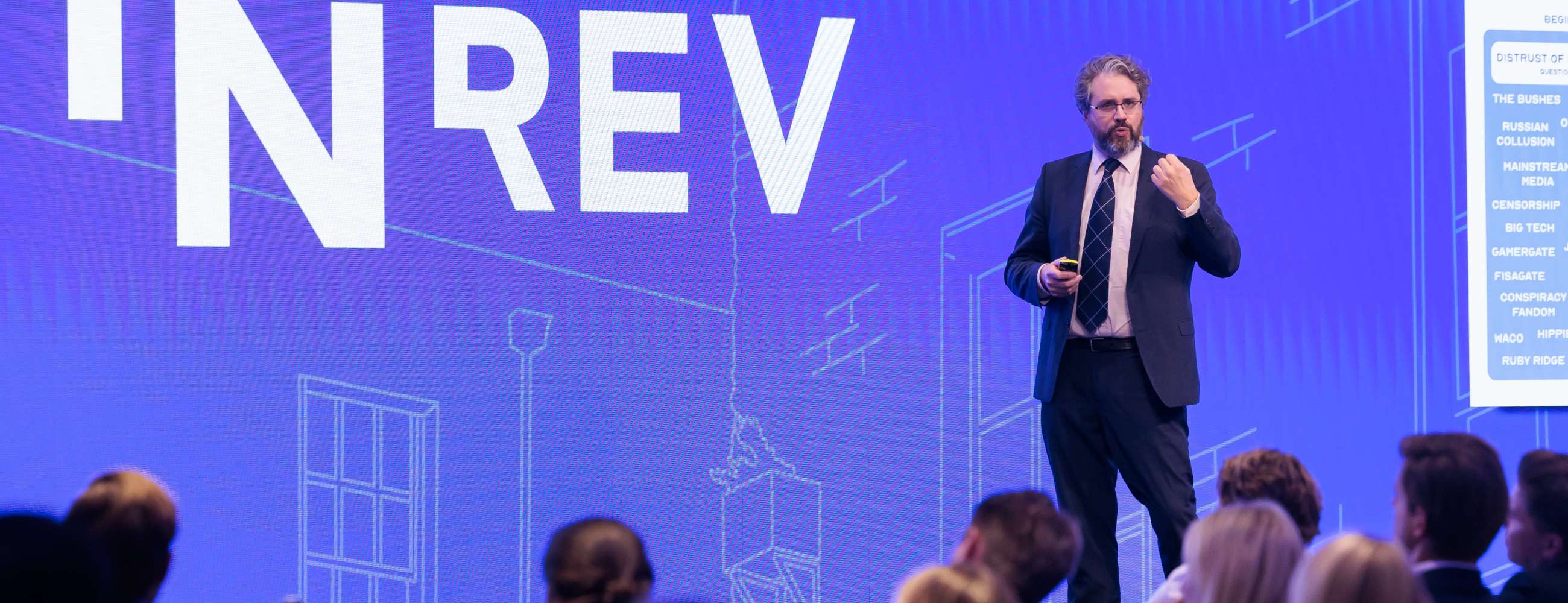
In the final session of the INREV Young Professionals Conference 2024, Eliot Higgins, founder of Bellingcat, delivered a powerful presentation on “Finding truth in a post-truth world". He began by asking the audience about their experiences with conflicting information online, revealing that 68% felt overwhelmed by it, and 76% knew someone drawn into conspiracy theories due to misinformation.
Eliot explained that conspiracy theories are pervasive, often fueled by disinformation campaigns, such as those generated by state-sponsored anonymous political commentators and internet 'trolls' linked to the Russian government. He introduced Bellingcat as an investigative journalism group specialising in fact-checking and open-source intelligence (OSINT), which he founded in 2014. The group began with an investigation into the use of weapons in the Syrian civil war, and its first major investigation—the downing of Malaysia Airlines Flight 17 (MH17)—was conducted primarily by volunteers.
Eliot highlighted the concept of ‘information disorder’, explaining how misinformation, disinformation, and malformation differ. While misinformation refers to false information, disinformation and malformation are spread with the intent to cause harm. He outlined the agents behind false information, including state actors, proxy government actors, and opportunistic manipulators, all of whom exploit crises and online algorithms to create "true believers."
He provided examples of major disinformation campaigns, such as those surrounding the COVID-19 pandemic, vaccines, and the QAnon conspiracy theory. He also showed a graph from Kate Starbird, American computer scientist and co-founder of the University of Washington's Center for an Informed Public’s research, illustrating how alternative media ecosystems position themselves as 'independent' or 'alternative' to mainstream media, feeding into distrust of traditional sources.
Higgins explained that combating misinformation requires tools for open-source investigation, legal accountability, and collaboration with investigative hubs, law firms, and universities. Bellingcat uses a variety of tools to track digital footprints, timestamps, file sources, and creation dates, helping to verify whether information has been altered or is genuine.
A key part of the solution, according to Eliot, is education—teaching younger generations to distinguish between true and false information, using the internet's current landscape as a foundation. He stressed the importance of engaging with people early to prevent them from falling into conspiracy theories.
Eliot concluded by emphasising the need to use these tools to combat misinformation, rather than blocking social media platforms, which only fosters more distrust. Instead, empowering individuals with the ability to investigate the truth will be key to navigating the post-truth world.
Audience poll:
Have you ever felt overwhelmed by the amount of conflicting information available online?
- Yes - 68%
- No - 21%
- Not sure - 11%
Do you know anyone in your life, be it a friend, family member, or professional associate, that you believe has been drawn into a conspiracy theory?
- Yes - 76%
- No - 14%
- Not sure - 10%
Presentations
A special thanks to our conference moderators, Charlotte Robinson from APG Asset Management and Daniel Taylor from Ares Management, who skilfully navigated the day's proceedings, engaging speakers with insightful questions and ensuring everything ran seamlessly.
Photos
Thank you to our sponsors
